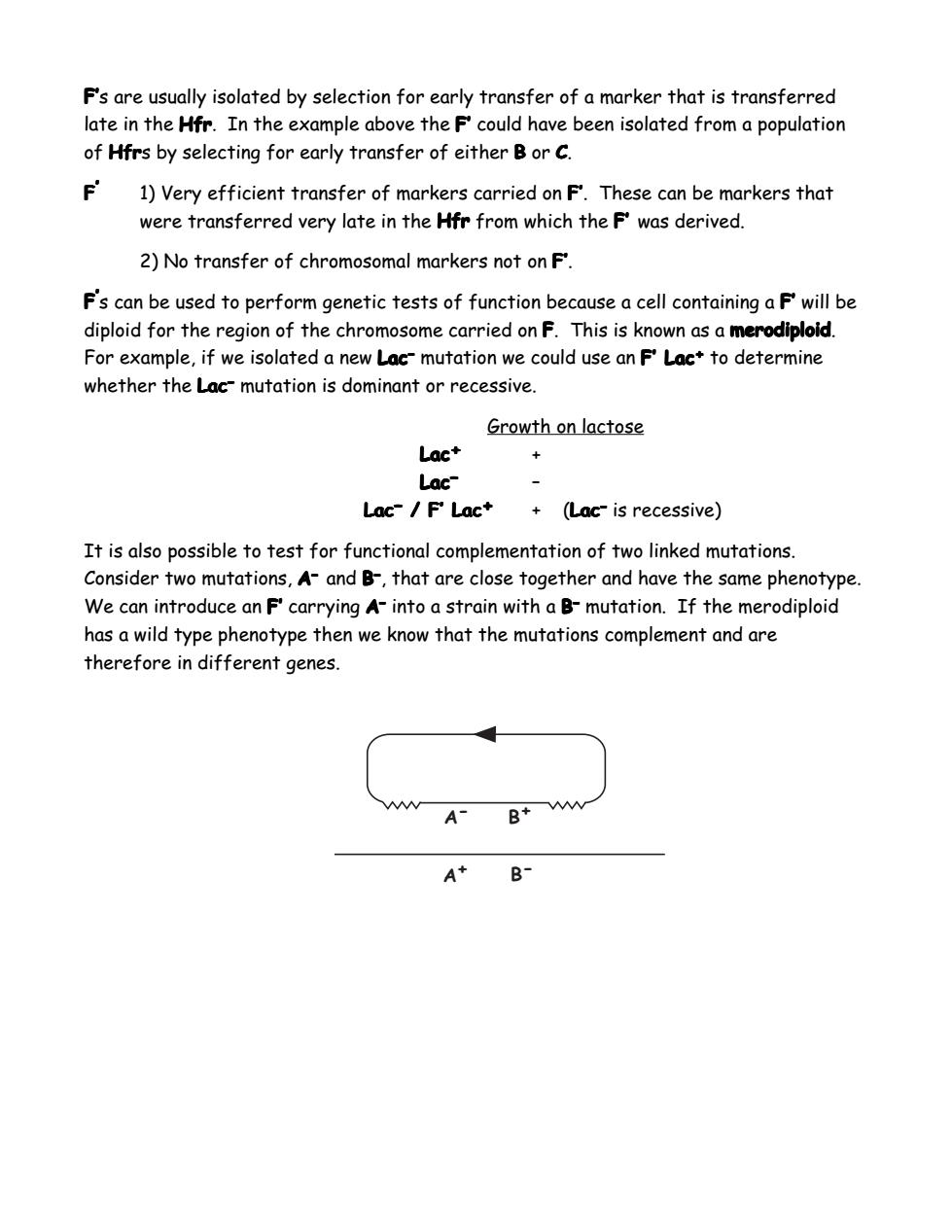正在加载图片...

F's are usually isolated by selection for early transfer of a marker that is transferred late in the Hfr.In the example above the F'could have been isolated from a population of Hfrs by selecting for early transfer of either B or C. F1)Very efficient transfer of markers carried on F.These can be markers that were transferred very late in the Hfr from which the F'was derived. 2)No transfer of chromosomal markers not on F'. F's can be used to perform genetic tests of function because a cell containing a F'will be diploid for the region of the chromosome carried on F.This is known as a merodiploid. For example,if we isolated a new Lac-mutation we could use an F'Lac*to determine whether the Lac-mutation is dominant or recessive. Growth on lactose Lac+ + Lac- Lac-/F'Lact (Lac-is recessive) It is also possible to test for functional complementation of two linked mutations. Consider two mutations,A-and B-,that are close together and have the same phenotype. We can introduce an F'carrying A-into a strain with a B-mutation.If the merodiploid has a wild type phenotype then we know that the mutations complement and are therefore in different genes. A B+ A BF’s are usually isolated by selection for early transfer of a marker that is transferred late in the Hfr. In the example above the F’ could have been isolated from a population of Hfrs by selecting for early transfer of either B or C. F’ 1) Very efficient transfer of markers carried on F’. These can be markers that were transferred very late in the Hfr from which the F’was derived. 2) No transfer of chromosomal markers not on F’. F’ s can be used to perform genetic tests of function because a cell containing a F’ will be diploid for the region of the chromosome carried on F. This is known as a merodiploid. For example, if we isolated a new Lac– mutation we could use an F’ Lac+ to determine whether the Lac– mutation is dominant or recessive. Growth on lactose Lac+ + Lac– – Lac–/ F’ Lac / F’ Lac/ F’ Lac+ + (Lac– is recessive) It is also possible to test for functional complementation of two linked mutations. Consider two mutations, A– and B–, that are close together and have the same phenotype. We can introduce an F’ carrying A– into a strain with a B– mutation. If the merodiploid has a wild type phenotype then we know that the mutations complement and are therefore in different genes. A- B+ - A+ B